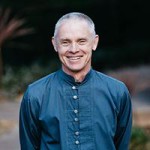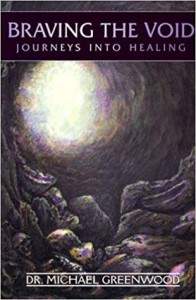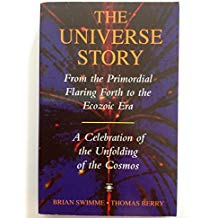In the last post, I included a link to an article on Non-dual Chinese Medicine and the Chong Mai or thrusting vessel, as there were many aspects raised by the author that intrigued me. One that struck home was his comment on the existential angst ‘fundamental to Western consciousness’. Given the state of the world these days, a certain amount of anxiety is impossible to avoid if you are paying attention. But author Michael Greenberg is referring to something more subtle, and more deeply embedded in the psyche.
 Adyashanti, one of my major mentors in the field of awakening has been exploring this Western angst, as he sees it in many of his students (and probably himself earlier on) and has developed a home study course on what he is calling ‘Redemptive Love.’ Adhya gets right to the point: “Unworthiness is the pandemic of Western Culture.” I love this quote as it points to a serious barrier to truly deep awakening. Many years ago I heard of the Dalai Lama responding to a question from a Western student about low self esteem and having no idea what that was. He was puzzled !!! I’m not. I have heard parts of Adya’s course, but now need to really absorb it more deeply as I my own personal angst is demanding attention. This angst can be seen as continually re-occurring disturbances or dissonance in our bio- energy field, so we can make sense of their nature, we may be able to tease out and release many of these patterns.
Adyashanti, one of my major mentors in the field of awakening has been exploring this Western angst, as he sees it in many of his students (and probably himself earlier on) and has developed a home study course on what he is calling ‘Redemptive Love.’ Adhya gets right to the point: “Unworthiness is the pandemic of Western Culture.” I love this quote as it points to a serious barrier to truly deep awakening. Many years ago I heard of the Dalai Lama responding to a question from a Western student about low self esteem and having no idea what that was. He was puzzled !!! I’m not. I have heard parts of Adya’s course, but now need to really absorb it more deeply as I my own personal angst is demanding attention. This angst can be seen as continually re-occurring disturbances or dissonance in our bio- energy field, so we can make sense of their nature, we may be able to tease out and release many of these patterns.
A common source of this angst/unworthiness are the many unresolved issues of our childhood. Michael Greenberg, cited above, has a book on healing journeys called ‘Braving the Void’, and in the chapter entitled ‘Childhood Terrors’, he states: “While the  average adult can control or mask unresolved childhood traumas, as we reach old age these mechanisms can weaken, allowing the hurt of fearful child to reappear. I believe this is why we so often see older people regressing to childhood behaviors and behaving irrationally. It makes sense then to try to come to terms with these fears at a time of life where we have the energy and will to integrate our various contradictory feelings.” My recent PTSD experiences are clearly coming from this dimension.
average adult can control or mask unresolved childhood traumas, as we reach old age these mechanisms can weaken, allowing the hurt of fearful child to reappear. I believe this is why we so often see older people regressing to childhood behaviors and behaving irrationally. It makes sense then to try to come to terms with these fears at a time of life where we have the energy and will to integrate our various contradictory feelings.” My recent PTSD experiences are clearly coming from this dimension.
A more insidious example of childhood trauma is shame. Tara Brach, in her extraordinary book ‘Radical Acceptance: Embracing Your Life With the Heart of the Buddha” offers this commentary on the same Dalai Lama story I mentioned above. “While all humans feel ashamed of weakness and afraid of rejection, our Western culture is a breeding ground for the kind of shame and self-hatred the Dalai Lama could not comprehend.” This quote comes from the very first chapter, entitled ‘The Trance of Unworthiness”.
From another perspective, this angst can also be fed by a flawed story embedded in the ancestral field through the DNA field our parents, grandparents, great-grandparents etc. Their belief systems around religion, personal value, cultural values and parenting all impact our personal energy fields in the present moment. In Classical Chinese Medicine, the ‘jing’, one of the three treasures is the carrier of our ancestral karma and learning how to nurture the jing can lead to more healing and transformation.
This involves the epigenetic fields and cell biologist Bruce Lipton is a great source for studies and practices. Epigenetics is where we learn about how changing environments, internally and externally, changes the ways in which the genes and DNA are activated. By healing ourselves, we are also healing our lineage/ancestors ‘now’ through the epigenetic DNA fields, and our planet needs lots of healing. We can also employ active dreaming and shamanic journeying to work with the ancestral karma.
Belief systems also manifest in our movements through what we can call ‘meaning making structures. I first encountered the idea of meaning-making as a self-organizing component of our biology in “How Life Moves” by Kevin Frank and Caryn McHose where they  describe four structures that underlie how we move through life, and how life moves through us. These include the physical structure of muscles, bones, connective tissue; the perceptual structure where we store patterns of attention that determine how we perceive the world, inwardly and outwardly; the co-ordinating structure where we store learned patterns of movements, small and large that the body can call upon, and use in combinations, when movement is required; and finally, the meaning making structure, where we create stories/ideas/beliefs about ‘what things mean’, and embody those meaning in patterns of movement and also inhibition, where certain movements are ‘not allowed’.
describe four structures that underlie how we move through life, and how life moves through us. These include the physical structure of muscles, bones, connective tissue; the perceptual structure where we store patterns of attention that determine how we perceive the world, inwardly and outwardly; the co-ordinating structure where we store learned patterns of movements, small and large that the body can call upon, and use in combinations, when movement is required; and finally, the meaning making structure, where we create stories/ideas/beliefs about ‘what things mean’, and embody those meaning in patterns of movement and also inhibition, where certain movements are ‘not allowed’.
As a simple personal example of these four structures, in my ongoing sax education, the physical structures of my whole body have to engage to facilitate new subtle movements in my fingers, wrists, throat, jaws and diaphragm. The co-ordinative structures have to keep evolving when new note combinations and different fingerings are required. The perceptual structures are being challenged by my sax guru Karl to hear nuances in pitch, rhythm, note lengths and chord harmonies. These are relatively straight forward. But when my meaning making structure is dominated by the inner critic embedded in the ‘story of unworthiness’, which probably extends back generations, there is no joy or delight possible when challenged.
If my primary interpretation of a challenging situation is that ‘obviously my being is flawed or ‘I am fundamentally unworthy of being whole’, my cellular capacity to respond from its own deep intelligence is compromised. What fascinates me is that I get the absurdity of this belief system intellectually, but that understanding is not penetrating into the biology. In fact, as I dive more deeply into the cellular/biologically driven sub-conscious and unconscious in my embodied practice, more of these strange energy fields are being released into my conscious awareness. My current ‘meaning-making’ model of the flaw in the core ‘meaning-making’ structure is that I am awakening in the DNA field of my Irish Catholic ancestors (with some English pathology as well) and ancestral healing is being requested.
This idea of inherited story opens lots of portals into fun explorations. First of all, it gets us into Dan Siegel’s work on ‘narrative integration, (see The Mindful Brain), where we need a healthy and ever evolving capacity to tell our ‘self-story’ by organizing all of our personal experiences and integrating them into our behavior. Religion and spirituality, and in fact all aspects of culture are transmitted through story. My mentor Thomas Berry, along with  Cosmologist Brian Swimme, co-wrote ‘The Universe Story” as a primary story for all humanity in the 21st century, orienting them to the magnificence of creation as everyone’s personal story. I’ve been studying Vedanta for almost 50 years, and Vedanta is all story based. The Bhagavad Gita, a mini story, is embedded in the 1.8 million word “Mahabharata’ one of the greatest epic stories in human history. The Katha Upanishad tells the tale of a young boy calmly confronting Lord Yama, god of death. Vedanta’s overall perspective is that this angst arises because we ‘forget’ our inherent wholeness, or ‘basic goodness’ and just need to be reminded, through teaching.
Cosmologist Brian Swimme, co-wrote ‘The Universe Story” as a primary story for all humanity in the 21st century, orienting them to the magnificence of creation as everyone’s personal story. I’ve been studying Vedanta for almost 50 years, and Vedanta is all story based. The Bhagavad Gita, a mini story, is embedded in the 1.8 million word “Mahabharata’ one of the greatest epic stories in human history. The Katha Upanishad tells the tale of a young boy calmly confronting Lord Yama, god of death. Vedanta’s overall perspective is that this angst arises because we ‘forget’ our inherent wholeness, or ‘basic goodness’ and just need to be reminded, through teaching.
The Tao’ists believe that the human at birth is placed in the center of the creation process, providing a link between yin and yang, making them naturally connected and relevant. Like the Vedantans, the Taoist view is that our humanity is always an expression of the whole, the macrocosm, the Universe, but because we inhabit a world of constant change, we need to continually ‘re-tune’ ourselves through practice. going out of tune, experiencing imperfections, confusion and doubt are all par for the human course. We just need to learn some skillful means (upayas) to navigate our lives and fully participate in the unfolding of our soul’s journey here on Mother Earth in the early years of the 21st century. We all have a unique contribution to add to the story of our time and place. Discover it and live it fully.

